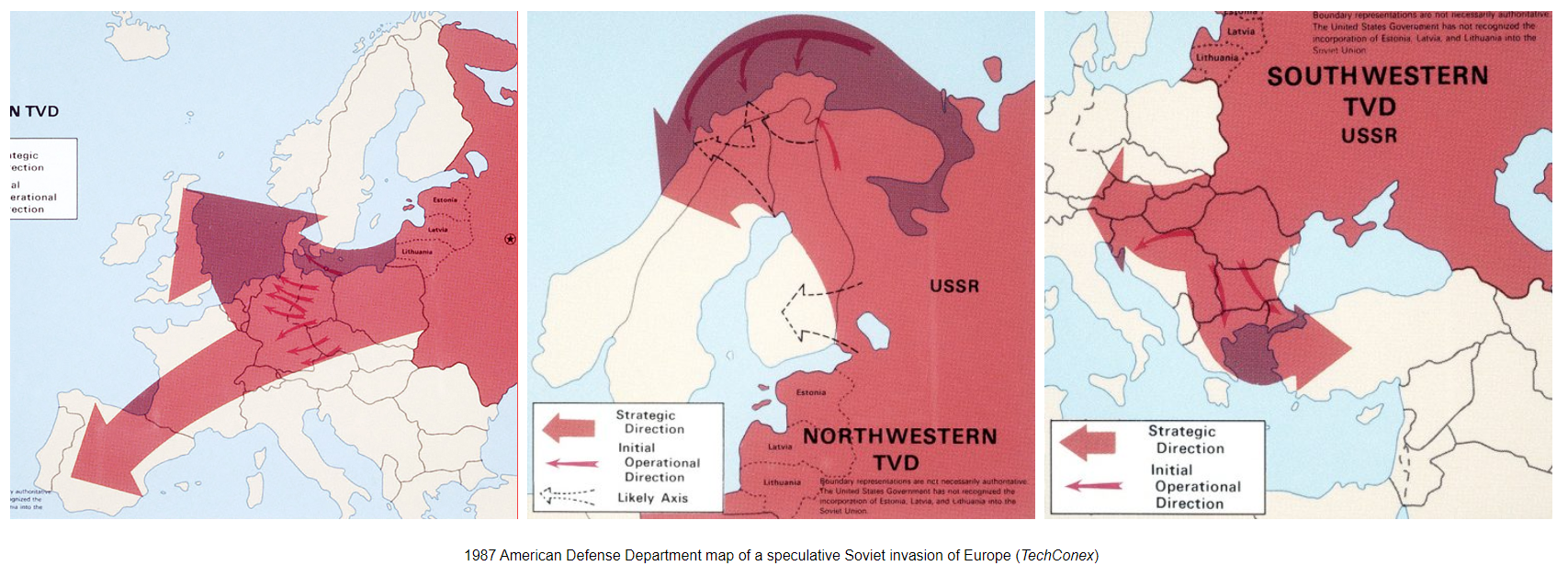On May 15, 2022, the Swedish and Finnish governments announced they intended to join the North Atlantic Treaty Organization (NATO) following the February 24 invasion of Ukraine. This announcement shocked the international community and the Russian Federation, which have long relied on the strategic neutrality of the two Scandinavian countries. The leadership of both countries agreed that if any decision to join NATO were reached, the countries would go together, reflecting their immense cultural, political, and military ties. Finland was actually a part of the Kingdom of Sweden from 1150 until 1809 when the Russian Empire occupied Finland in the Finnish War.
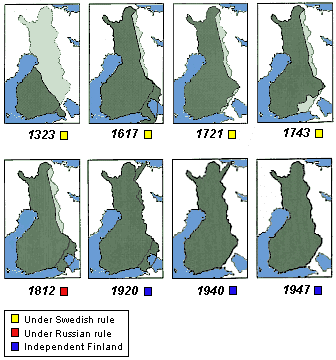
Sweden and Finland have enjoyed a historically friendly relationship with the United States and the West while also balancing the burgeoning military might of the Soviet Union, now the Russian Federation, to the East. This was especially true for Finland, considering the Soviet invasion of 1939. Since the fall of the Iron Curtain in 1991, bilateral military cooperation with the United States and NATO has significantly increased, with the participation of U.S. forces in several Swedish and Finnish military exercises. However, this relationship has reached a crossroads, with many unsure how to exploit the 1,000-kilometer border between the Russian Federation and the Scandinavian countries. The Russian Federation has issued severe warnings concerning the placement of NATO weapons and bases in either country, further raising tensions during the Ukraine-Russia war.
This analysis will delve into the historical relationships between the United States, Sweden, and Finland. By analyzing each country’s militaries and how the U.S. has traditionally interacted with them, this analysis will identify areas in which military cooperation can expand. Then, by breaking down the Russian response to NATO accession, this analysis will identify the red lines of that military cooperation. This analysis recommends that NATO planners immediately expand pre-existing exercises, such as Cold Response, to more accurately reflect the geopolitical situation in Scandinavia while moving to establish a potent NATO presence in Lapland, Finland.
U.S. – Sweden Relations
Sweden is an Enhanced Opportunities Partner (EOP) of NATO, a member of the Global Coalition to Defeat ISIS, a participant of the United Nations Multidimensional Integrated Stabilization Mission in Mali (MINUSMA), and was a contributing member of the International Security Assistance Force (ISAF) in Afghanistan between 2001 and 2014, demonstrating a solid cooperative military history with the United States. Sweden has also participated in several American exercises, including Jackal Stone, Bold Avenger, Unified Engagement, Cold Response, and others. However, since 2016, that relationship has dramatically expanded due to Russian aggression in the Middle East, Ukraine, Africa, and the Baltics. After the 2014 annexation of Crimea, Sweden overwhelmingly voted to allow enhanced NATO cooperation which green-lighted NATO training on Swedish soil. In 2019, NATO partners participated in the large-scale Swedish exercise Northern Wind, which involved more than 10,000 personnel in Northeast Sweden, focusing on countering a Russian land invasion. In 2021, Sweden was the first non-NATO ally to receive the PATRIOT missile battery for air defense of strategic lines of communication in the Baltic Sea. In 2022, following the Russian invasion of Ukraine, the United States revamped its annual exercise Baltic Operations (BALTOPS) to focus on the reinforcement and defense of the island of Gotland. 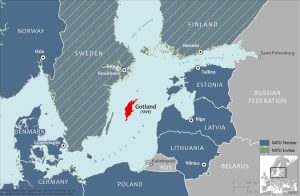 During the buildup around Ukraine in 2021, Western analysts feared that Russian amphibious assault craft could be used to swiftly seize the strategic island, which has been occupied by Russia before. These exercises seek to bolster the ability of the smaller Swedish Armed Forces, which have only 23,000 active service members, and the Home Guard, which comprises 24,000 members. Now that Sweden will probably be a NATO member by Christmas, the Alliance must look towards integrating the Swedish Armed Forces into the NATO defense plan for the High North, leaving behind decades of defensive non-alignment.
During the buildup around Ukraine in 2021, Western analysts feared that Russian amphibious assault craft could be used to swiftly seize the strategic island, which has been occupied by Russia before. These exercises seek to bolster the ability of the smaller Swedish Armed Forces, which have only 23,000 active service members, and the Home Guard, which comprises 24,000 members. Now that Sweden will probably be a NATO member by Christmas, the Alliance must look towards integrating the Swedish Armed Forces into the NATO defense plan for the High North, leaving behind decades of defensive non-alignment.
U.S. –Finnish Relations
During the Cold War, Finland and the United States recognized a tense but strategic partnership due to Helsinki’s proximity to the Soviet Union. A U.S. embassy was not established there until 1954, quickly becoming a battleground for clandestine intelligence actors on all three sides. However, by 1975, Helsinki held several agreements to decrease Cold War tensions. In 1994, Finland joined the North Atlantic Treaty Organization’s (NATO) Partnership for Peace program and earned Enhanced Opportunity Partnership in 2014. Since 2005, Finland has worked with the United States with a Memorandum of Understanding (MoU) to share aircraft and aerospace technology. While Sweden and Finland contribute significantly to the defensive posture of NATO’s Northern flank, Finland is in a much more precarious position due to its shared 700km border with the Russian Federation, putting it in direct confrontation with Moscow. That relationship has resulted in the modernization of Finland’s air forces with the F-18 Hornet and the F-35 Lightning. Finland also hosts U.S. and NATO forces for several annual exercises, such as Summer Exercise and Arrow 22. When United States Marines onboard the 22nd Marine Expeditionary Unit entered the Baltic Sea in the summer of 2022, the Finnish were one of the primary partners on the training schedule.
These training exercises seek to bolster Finland’s total defense doctrine to maintain a small standing military (about 25,000 personnel) and a vast reserve force built by mandatory 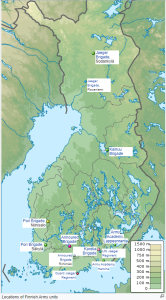 conscription. This conscript program begins at eighteen years old and keeps about 900,000 personnel trained and available for activation. The primary goal of this force is to protect the Greater Helsinki area from seizure in the event of a conventional or nuclear attack. These goals have resulted in a demilitarized northern border with only three brigades responsible for the large Lapland, Northern Ostrobothnia, and Kainuu municipalities. Additionally, only one of four Finnish Air Force Bases serve the northern regions. These three municipalities encompass about sixty-five percent of the Finnish-Russian border. This border region is mostly flat; however, visibility and mobility are restricted due to dense forests and lake lands. When Finland becomes a full-fledged NATO member, it will share the most extensive bilateral land border with Russia. It will also most likely face a severe review of its standing military objectives, composition, and disposition.
conscription. This conscript program begins at eighteen years old and keeps about 900,000 personnel trained and available for activation. The primary goal of this force is to protect the Greater Helsinki area from seizure in the event of a conventional or nuclear attack. These goals have resulted in a demilitarized northern border with only three brigades responsible for the large Lapland, Northern Ostrobothnia, and Kainuu municipalities. Additionally, only one of four Finnish Air Force Bases serve the northern regions. These three municipalities encompass about sixty-five percent of the Finnish-Russian border. This border region is mostly flat; however, visibility and mobility are restricted due to dense forests and lake lands. When Finland becomes a full-fledged NATO member, it will share the most extensive bilateral land border with Russia. It will also most likely face a severe review of its standing military objectives, composition, and disposition.
Geopolitical Ramifications of Russia’s Invasion of Ukraine on Scandinavia
On February 24, 2022, the Russian Federation launched a massive combined arms invasion against the former- Soviet Bloc nation of Ukraine. The opening salvo of the conflict involved more than one hundred cruise missiles from surface, sub-surface, air-launched, and ground-based platforms and hundreds of tactical aircraft sorties which sought to achieve effective suppression of enemy air defenses (SEAD). Simultaneously, more than 200,000 Russian troops crossed at hundreds of points from Belarus, mainland Russia, and Crimea. This massive invasion, now the most significant land war in Europe since World War II, galvanized Swedish concerns and Finnish memories of Russian aggression against Scandinavia.Three months later, the two countries announced that they would apply to join NATO. On June 29, the two Scandinavian countries officially applied to the Alliance at the Madrid Summit; since then, twenty-eight of the thirty members have ratified the accession, with Hungary and Türkiye outstanding but expected to ratify. This geopolitical backfire has sent waves throughout the Russian Federation, especially amongst war hawks in the Ministry of Defense.
Russian Response to Scandinavian NATO Applications
On April 14, 2022, former Russian President Medvedev told the press that if Sweden and Finland joined NATO, a nuclear-free Baltic would be abolished to restore balance. Although it is questionable if the Baltics are indeed “nuclear-free,” considering reports of Russian nuclear weapons in Kaliningrad, this veiled threat most likely alluded to the deployment of nuclear weapons in the Gulf of Finland, where the Russian military maintains several island bases. On June 20, 2022, nine days before Sweden and Finland officially applied to join NATO, Russian Defense Minister Shoigu announced that twelve new military bases would be established on the border with Finland in a blatant attempt to dissuade the Finnish government from applying. This policy announcement was significant because the current Russian military posture near the Finnish border is minimal.
The most significant installation is at Alakurtti, Murmansk Oblast, where the 80th Arctic
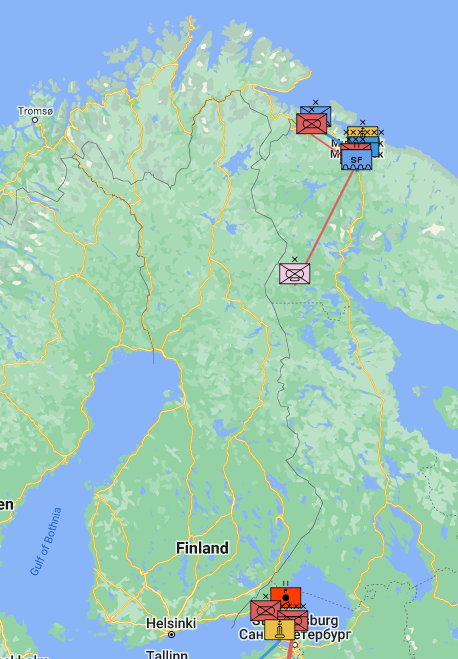
Mechanized Brigade is stationed. The Brigade comprises 700 personnel and is co-located with the 4th Naval Bomber Regiment and the 485th Independent Helicopter Regiment. The 80th and its sister unit, the 200th Separate Motor Rifle Brigade, stationed in Pechenga, near the Norwegian border, have both been deployed to Ukraine, where they suffered significant casualties in the Battle of Kharkiv. In the Western Joint Strategic Command, near St. Petersburg, the 138th Mechanized Brigade is stationed in Kamenka, but that unit, too, has been significantly degraded by fighting in Ukraine. These twelve new bases would most likely be established in the 600km stretch of border between Alakurtti and Kamenka to establish Russia’s military power in vulnerable gaps along the rural Finnish border. However, the war in Ukraine has most likely made those plans unrealizable for the next five years as depleted units attempt to achieve Russia’s immense battlefield objectives.
Recommendations on the Way Forward
There are two primary schools of thought amongst senior U.S. defense planners on how to proceed with the accession of Sweden and Finland into NATO. The first has been echoed by General Christopher Cavoli, Commander of U.S. European Command (EUCOM), who would ultimately be responsible for conducting a land war against the Russian Federation. His publicly released strategy is to increase exercises and cooperation with Sweden and Finland, meaning more troops at a time and more frequent drills. However, he does not believe new NATO installations or permanent troop deployments to Sweden or Finland are necessary or wise.
This strategy stands in contrast to the current strategy, which involves the U.S. basing agreements with the nine geographically closest NATO partners to the Russian Federation: Bulgaria, Romania, Hungary, Poland, Lithuania, Latvia, Estonia, and Norway. All these countries allow permanent deployment of varying numbers and capabilities of U.S. and NATO forces, particularly aerospace force projection. However, even within NATO partners, there are several models to choose from. In the Baltics, U.S. concentration has been relatively light, with the most potent being the battalion-sized rotational force in Lithuania since 2019. This stands starkly contrasted to Poland, where 10,500 troops routinely train and rotate as part of NATO forces committed to the defense of the Suwalki Gap. In the middle is the Norwegian model, in which a medium-sized force of about 3,000 personnel trains and rotates. At the same time, the United States Marines Corps maintains a sizable arsenal of pre-positioned war materiel for use in a troop surge. However, since Finland and Sweden are not NATO members yet, and no bilateral agreement exists between the U.S. and the Scandinavian countries, U.S. troops’ presence in those countries has been limited to embassy defense and short training periods.
With the geopolitical ramifications of the Russian invasion of Ukraine taken into complete account, as well as premature escalatory steps taken by the Russian Federation, it is clear that allowing Russian militarization of the Finnish border without a NATO response is unacceptable. Before the Russian invasion of Ukraine, Foreign Minister Lavrov decried the “NATOization” of that country, which shared the most extensive land border with Russia. While the historical relationship between Russia and Ukraine is vastly different from the historical relationship with Finland, it is clear that the current regime in Russia is more interested in creating a strategic buffer from NATO than respecting the national integrity of its neighbors. Hence why the Russian Defense Ministry desperately attempted to saber-rattle against Finnish-Swedish accession while fighting a losing war in Ukraine. This analysis recommends that the solution for ensuring the security of a fully NATO Scandinavia is a blend of the Norwegian and Baltic models.
In 2015, Deputy Chairman of NATO’s Military Committee, Lt Gen Mark O. Schissler, attended a live fire demonstration from the Jaeger Brigade in Sodankyla, responsible for the defense of the sparsely populated Lapland Municipality. During that meeting, NATO and Finnish representatives discussed further training and cooperation opportunities for the Finnish High North, specifically through an arms sale of F-35 to replace the aging F-18 fleet out of Rovaniemi airbase. Now that Finland has purchased sixty-four of the advanced fighters, NATO should once again approach Finland with a security proposal, but this time, a NATO installation that could host an entire Scandanavian Battle Group. The Finnish-led group could host hundreds of U.S. troops and supplies for a fight in Northern Russia. In the next five to ten years, that group could be cultivated into a lethal and agile force tasked with cutting off the Kola Peninsula from St. Petersburg by neutralizing Russian Forces in Alakurtii and seizing E105, the major resupply route running North to Monchegrosk and eventually Murmansk.
In the immediate term, as the operational plans concerning Russia are being rewritten to include Swedish and Finnish forces, U.S. planners must expand and possibly relocate the main effort of ground demonstration for Cold Response ’24, now dubbed Nordic Response. The name of the annual exercise has already been changed to reflect the geopolitical ramifications of Swedish-Finnish accession into the Alliance. However, Nordic Response ’24 would be best executed on Finnish soil, with U.S. Marines conducting amphibious and aerial insertion into Helsinki and then North to Lapland, where they can best fill the operational gap in Russia’s still militarized border with Finland.
The United States is at a crossroads with the Russian Federation, much like how it was in 1980 after a year of Soviet warfare in Afghanistan. As the war in Ukraine churns into its ninth month, the U.S. once again has the choice to reduce or increase pressure on the unstable Russian regime. The United States and NATO chose to increase the pressure on the Soviet Union by executing monumental naval exercises in the High North, specifically through Ocean Venture ’81, BALTOPS, and Cold Response, among others. Expanding Nordic Response ’24 to prioritize Finland and Sweden while also moving to establish a Scandinavian Battle Group may be the decision that ultimately convinces the Russian Federation that a prolonged war against NATO interests is futile.
Tessaron is a former United States Marine Corps Intelligence Officer. United States Naval Academy alumni and current graduate student in Intelligence Analysis at American Military University. Covering flash military, intelligence, and geopolitical news, he is one of the most respected and close friends of the Atlas team | Instagram | Read More By Tessaron

